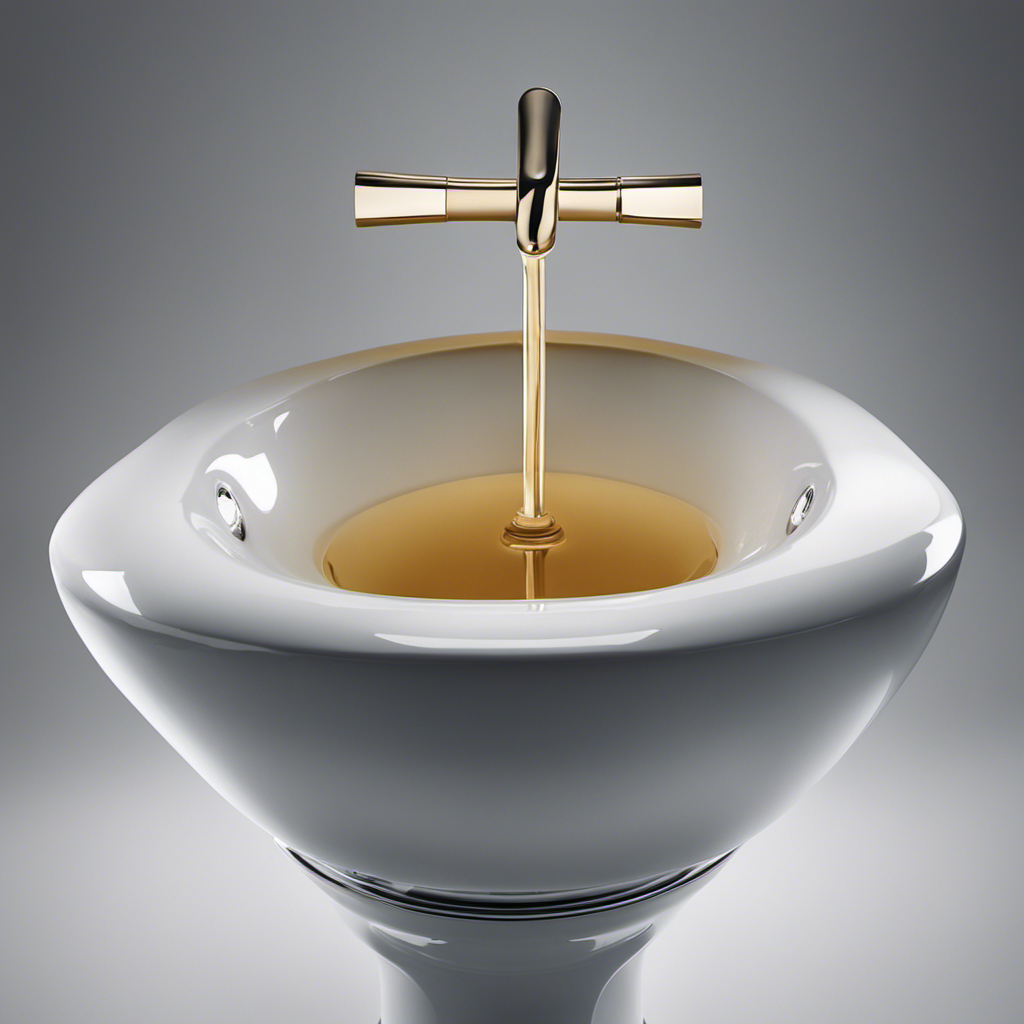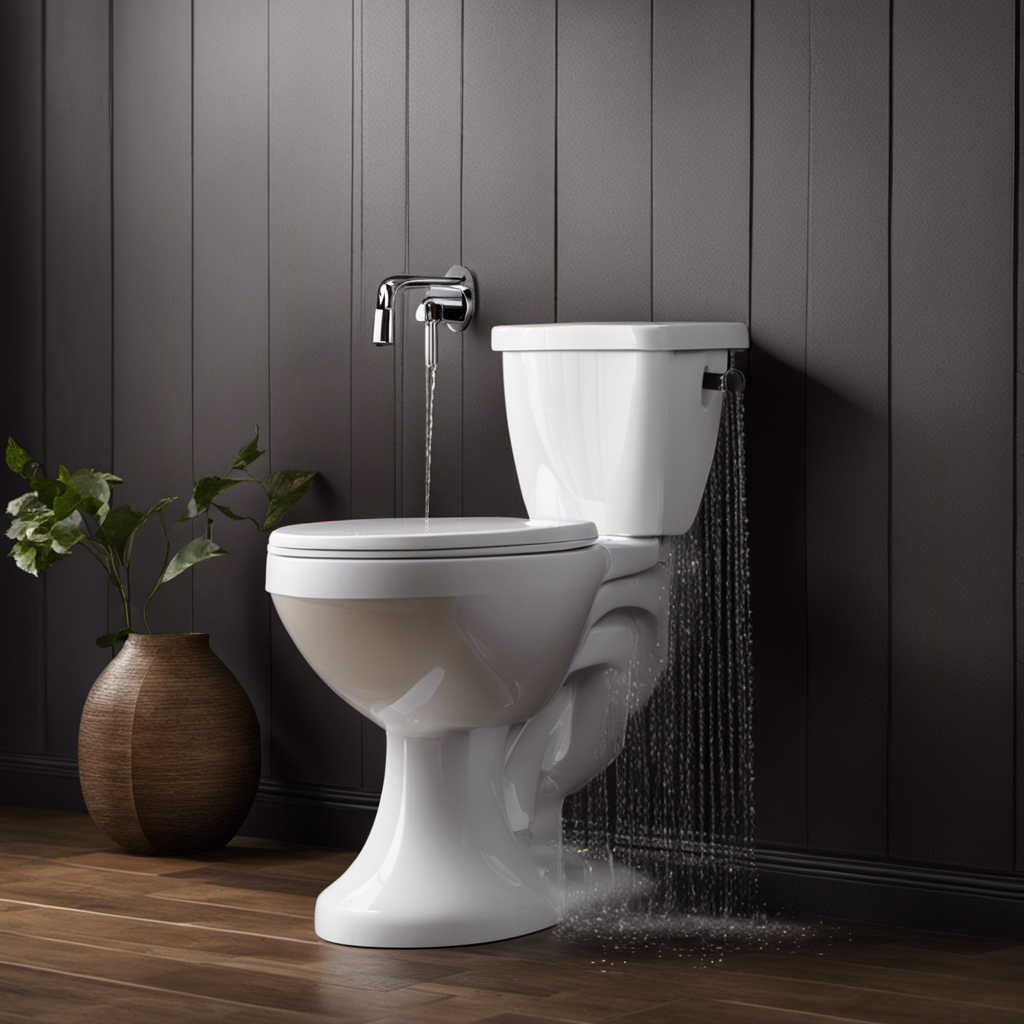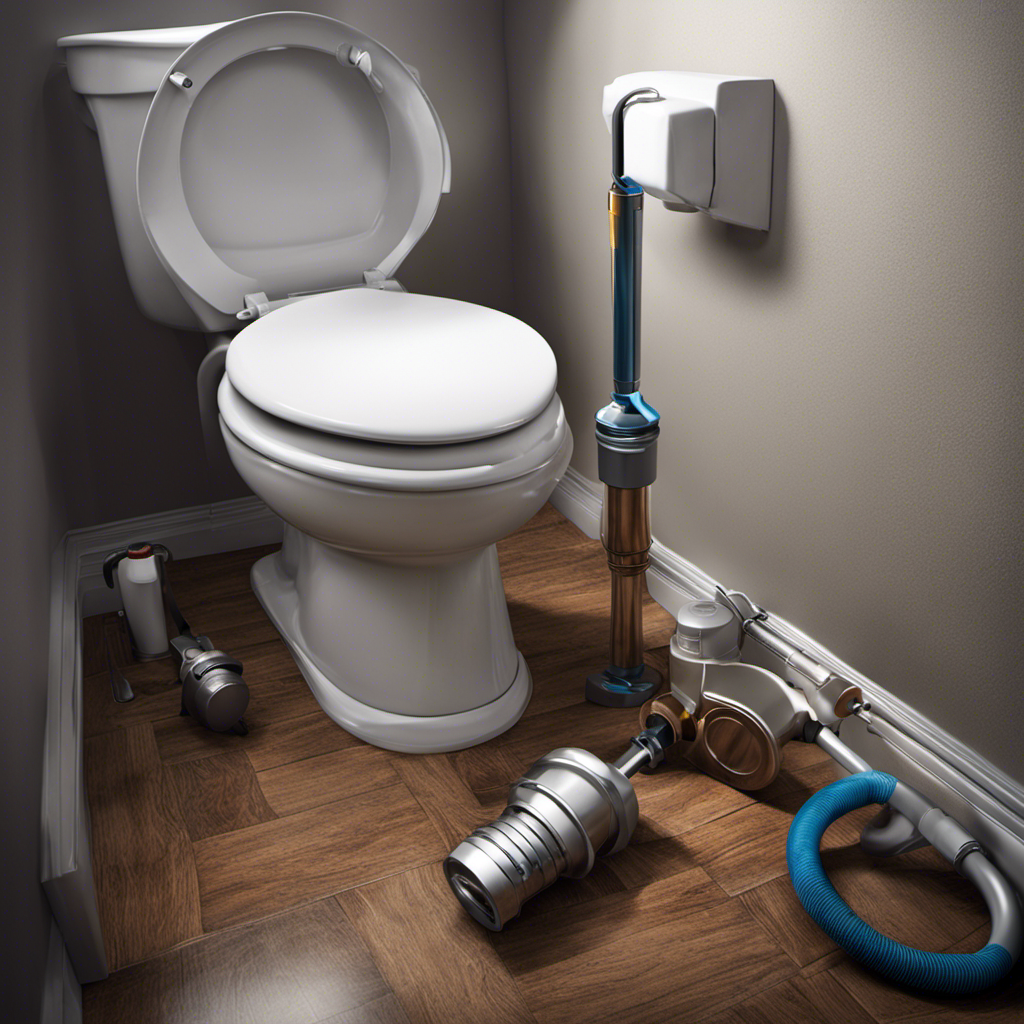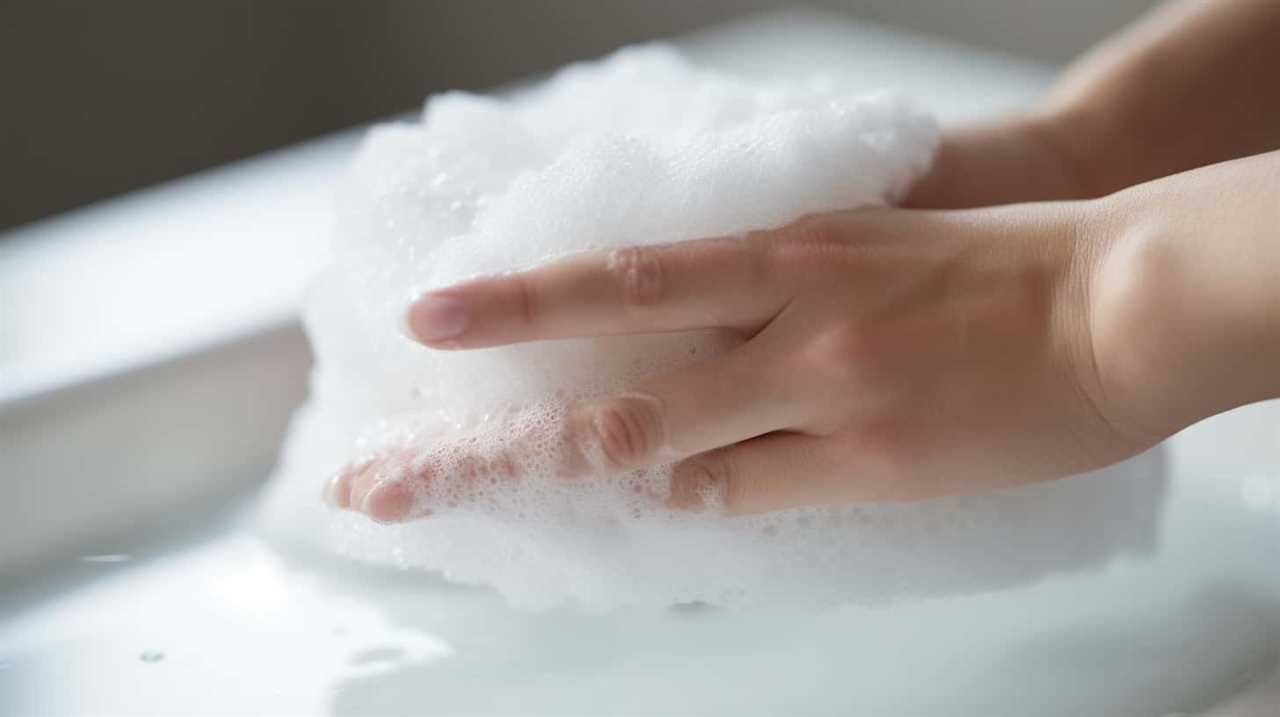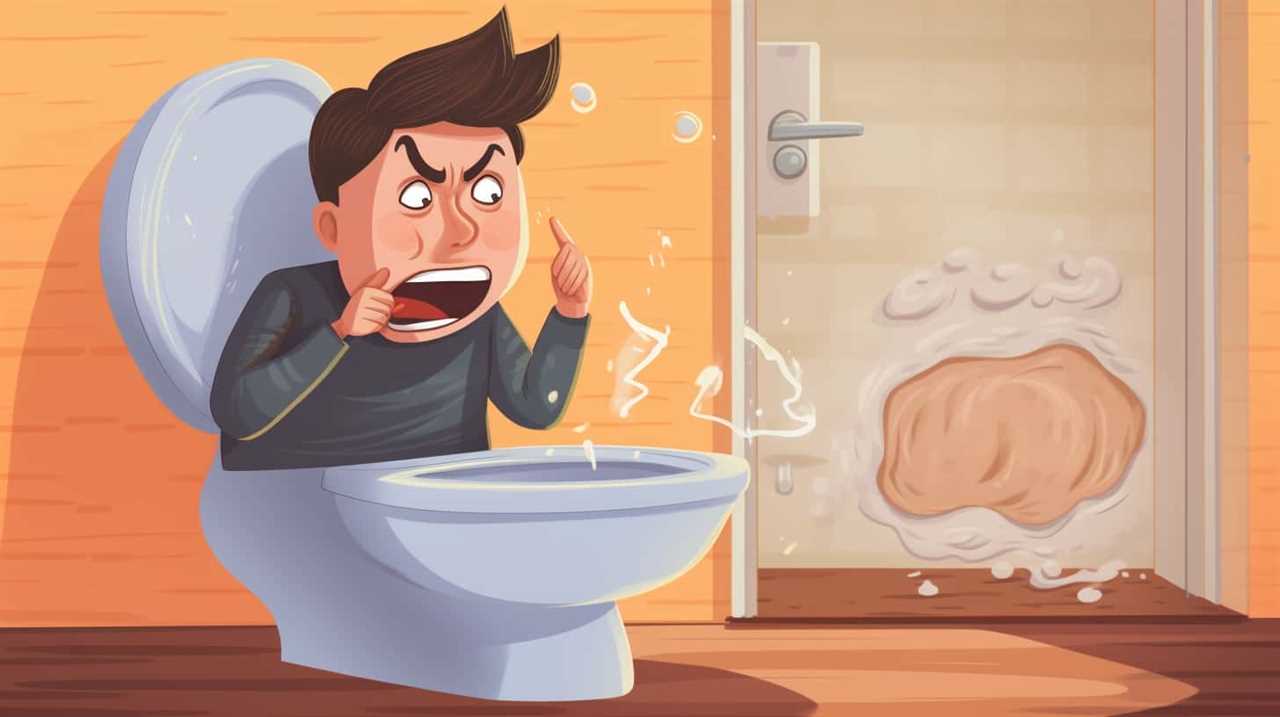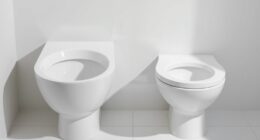Are you frustrated by a toilet that won’t flush? You’re not alone.
In fact, did you know that 85% of toilet flushing problems can be attributed to a few common causes? Understanding the inner workings of your toilet can help you troubleshoot and solve the issue quickly.
From the flush valve to the flapper and flush handle mechanism, we’ll guide you through the steps to take when your toilet isn’t flushing properly.
Get ready to regain control of your bathroom experience.
Key Takeaways
- Clogged pipes, excessive toilet paper, foreign objects, or mineral deposits can cause toilet flushing problems.
- Malfunctioning flush valves can result in weak or non-existent flushes.
- Low water pressure can contribute to flushing problems.
- Using a plunger or hot water can be effective methods for unclogging a toilet.
Common Causes of Toilet Flushing Problems
One of the most common causes of toilet flushing problems is a clogged pipe. When your toilet bowl is not flushing properly, it could be due to a blockage in the pipes that carry waste away from your home. This blockage could be caused by various things such as excessive toilet paper, foreign objects, or even a buildup of mineral deposits over time.
Another common cause of flushing problems is a malfunctioning toilet tank. If the tank is not filling up with enough water, it won’t have enough pressure to properly flush the waste down the drain. In some cases, the flapper inside the tank may also be worn out or not sealing properly, causing water to continuously leak and preventing a strong flush.
To resolve these issues, you may need to unclog the pipe using a plunger or a plumbing snake. Alternatively, you may need to replace the flapper or adjust the water level in the tank.
Understanding the Role of the Flush Valve
If you’re experiencing issues with your toilet not flushing properly, it could be due to a malfunctioning flush valve. The flush valve is responsible for releasing water from the tank into the bowl when you flush.
A malfunctioning flush valve can result in inadequate water flow, leading to incomplete or weak flushing. Additionally, water pressure issues can also contribute to toilet flushing problems, as low water pressure may not provide enough force to effectively clear the bowl.
Flush Valve Malfunction
The toilet’s not flushing because the flush valve isn’t working properly. The flush valve is responsible for releasing water from the tank into the bowl when you flush. If it malfunctions, the water flow may be insufficient or completely blocked, resulting in a weak or non-existent flush.
To address this issue, you can consider the following steps:
-
Check for any obstructions: Sometimes, debris or mineral buildup can clog the flush valve. Clean the valve and the surrounding area to ensure proper water flow.
-
Inspect the flush valve seal: Over time, the seal may deteriorate, causing leaks and preventing proper flushing. Replace the seal if necessary.
-
Consider a toilet flusher replacement: If the flush valve is severely damaged or outdated, it may be best to replace the entire flusher mechanism. This will ensure optimal performance and prevent future malfunctions.
Regular toilet tank cleaning and maintenance can also prevent flush valve issues. By following these steps, you can resolve the flush valve malfunction and restore proper flushing to your toilet.
Water Pressure Issues?
Experiencing water pressure issues? You might need to check if the flush valve is working properly. When it comes to toilet water flow issues, water pressure troubleshooting is an essential step in the process. Low water pressure can lead to weak flushes or even a complete failure to flush.
So, what can you do to troubleshoot this problem? Start by checking the water supply valve to ensure it is fully open. Next, inspect the fill valve and make sure it is functioning correctly. If these components are working properly, it’s time to examine the flush valve.
Look for any blockages or debris that may be impeding water flow. Clearing these obstructions should help restore proper water pressure and improve the flushing performance of your toilet.
How to Troubleshoot a Clogged Toilet
To troubleshoot a clogged toilet, you can try using a plunger. Here are three toilet plunger techniques that you can try as DIY toilet unclogging methods:
-
The Standard Plunge: Start by placing the plunger over the drain hole in the toilet bowl. Make sure there is enough water in the bowl to cover the suction cup of the plunger. Push down firmly and then pull up quickly, creating suction to dislodge the clog. Repeat this motion several times until the water starts to drain.
-
The Power Plunge: If the standard plunge doesn’t work, try adding some hot water to the toilet bowl. The hot water can help break up the clog. Once you’ve added the hot water, use the plunger again and follow the same steps as the standard plunge.
-
The Twist and Turn: Sometimes, a clog can be caused by an object stuck in the toilet drain. In this case, you can try using a plunger with an attached flange. Insert the flange into the drain and twist and turn it to dislodge the object. Once the object is free, use the plunger to clear the remaining debris.
Remember to use these techniques carefully and apply enough force to break up the clog without causing any damage to the toilet.
The Importance of Proper Water Pressure for Flushing
You should check if your water pressure is adequate for a proper flush. Proper maintenance of your toilet includes ensuring that the water pressure is sufficient to flush away waste effectively. If your toilet is not flushing properly, low water pressure may be the culprit.
Low water pressure can result from various issues, such as a clogged pipe, a faulty valve, or a problem with the water supply. To troubleshoot this problem, start by checking other faucets in your home to see if they also have low water pressure. If they do, the issue may lie with the water supply. However, if the problem is isolated to the toilet, you may need to inspect the valve and pipes for any obstructions or leaks.
Regularly checking and maintaining proper water pressure will ensure a smooth and effective flush.
Examining the Flapper and Flush Handle Mechanism
Having trouble with your toilet’s flapper? Don’t worry, we’ve got some troubleshooting tips for you.
In addition to that, it’s important to understand the significance of the flush handle and how it affects the overall functionality of your toilet.
If you’re experiencing issues with the flush handle mechanism, we’ll also provide some guidance on how to repair it.
Flapper Troubleshooting Tips
If the toilet is not flushing, check if the flapper is properly aligned and making a tight seal. The flapper is the rubber piece that covers the flush valve and releases water into the toilet bowl when the handle is pressed. Here are three troubleshooting tips for the flapper:
-
Inspect the flapper for any signs of damage or wear. If the flapper is cracked, warped, or deteriorated, it will not create a proper seal and may need to be replaced.
-
Ensure that the flapper chain is properly attached and has the correct amount of slack. If the chain is too loose or too tight, it can prevent the flapper from closing properly.
-
Clean any mineral deposits or debris that may be preventing the flapper from closing tightly. Use a soft brush or cloth to gently scrub away any buildup on the flapper or the flush valve.
Importance of Flush Handle
Now that you have learned about troubleshooting flapper issues, let’s discuss the importance of the flush handle in maintaining a properly functioning toilet.
The flush handle is a crucial component that initiates the flushing process. If you experience any problems with your toilet not flushing properly, the flush handle could be the culprit.
Common issues include a loose handle, a handle that sticks, or a handle that doesn’t return to its original position after flushing.
To troubleshoot flush handle issues, start by checking if the handle is securely fastened to the toilet tank. If it’s loose, tighten the mounting nut. If the handle sticks or doesn’t return, there may be a problem with the chain or the lift arm. Inspect these components for any damage or misalignment.
Proper toilet handle maintenance is essential to ensure a smooth flushing experience.
Repairing Flush Handle Mechanism
The next step in repairing the flush handle mechanism is to inspect the chain and lift arm for any damage. Here are three things you should check for when examining these components:
-
Chain Length: Ensure that the chain is properly connected to both the handle and the lift arm. If the chain is too loose or too tight, it may prevent the flush valve from opening or closing properly.
-
Chain Alignment: Make sure that the chain is aligned with the lift arm. If the chain is off-center or twisted, it may cause the flush valve to get stuck or not function correctly.
-
Lift Arm Condition: Examine the lift arm for any signs of wear or corrosion. If the lift arm is damaged, it may not provide enough leverage to lift the flush valve, resulting in a weak or incomplete flush.
Steps to Take When the Toilet Won’t Flush Properly
To fix a toilet that won’t flush properly, you should start by checking the water level in the tank. Ensure that the water level is at the designated mark, which is usually indicated by a line or a float. If the water level is too low, it may not provide enough force to flush the waste down the drain. On the other hand, if the water level is too high, it can cause the toilet to constantly run or overflow. Adjust the water level by either turning the fill valve clockwise to decrease it or counterclockwise to increase it. Proper toilet maintenance and DIY toilet repairs can save you time and money in the long run.
Emotional Response Table:
| Emotion | Reason | Solution |
|---|---|---|
| Frustration | Toilet doesn’t flush | Check water level in the tank |
| Annoyance | Toilet constantly runs | Adjust water level |
| Worry | Toilet overflows | Ensure water level is correct |
Conclusion
So there you have it, the mystery of why your toilet isn’t flushing has been solved. Just like in life, sometimes things get clogged and need a little troubleshooting to get back on track.
Remember, the flush valve is like the heart of your toilet, and a clogged toilet is like a blocked pathway in life. But with the right knowledge and tools, you can overcome any obstacle.
So don’t let a non-flushing toilet bring you down, tackle the problem head-on and flush away your troubles!
